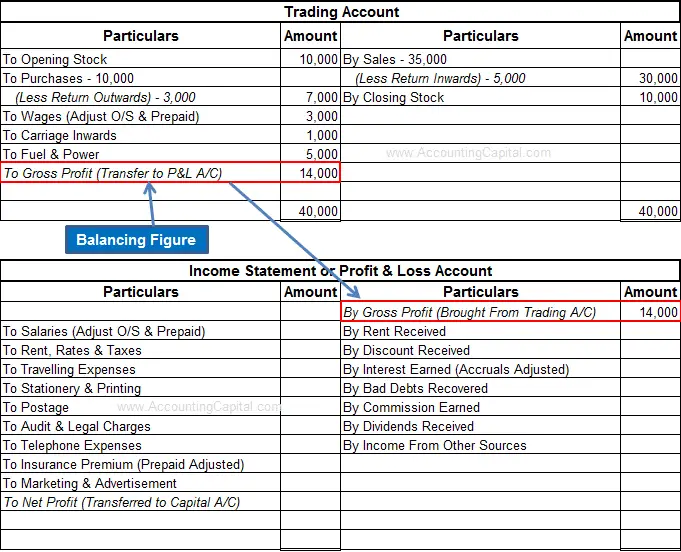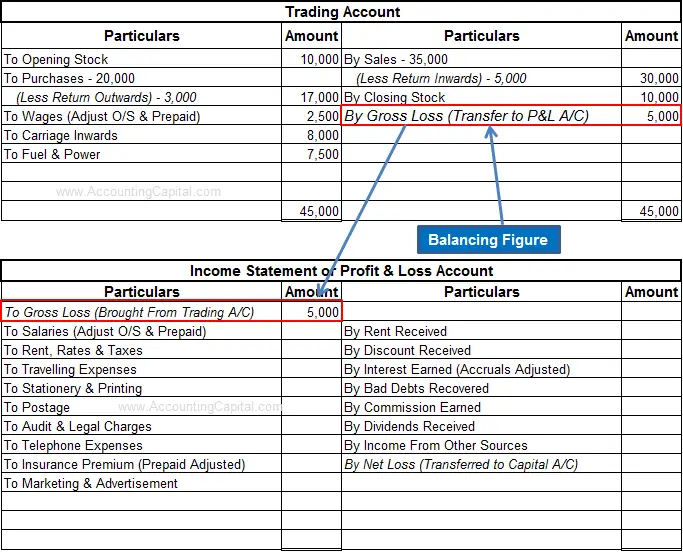Gross Profit and Gross Loss
A business may earn money from various different operating and non-operating sources. Similarly, it may spend on several different ongoing and one-time items. The difference between direct expenses and direct revenues of business gives rise to gross profit and gross loss.
In its noun form, the word “Gross” means an amount before deduction of expenses. In the accounting world, gross profit and gross loss refer to the net of direct expenses and revenue from operations before adjusting indirect items.
Gross Profit
In a company’s trading account if the credit side i.e. the income side is in excess of the debit side i.e. the expense side it is said to have earned a gross profit. The amount calculated is the balancing figure to be put on the debit side as a part of balancing the account.
Credit Side (Direct Incomes) > Debit Side (Direct Expenses)
Gross Profit is transferred to the Profit & Loss Account on the credit side and further added to the income earned in the current period.

Related Topic – What is a Profit and Loss Appropriation Account?
Gross Loss
In a company’s trading account if the debit side i.e. the expense side is in excess of the credit side i.e. the income side it is said to have earned a gross loss. The amount calculated is the balancing figure to be put on the credit side as a part of balancing the account.
Debit Side (Direct Expenses) > Credit Side (Direct Incomes)
Gross Loss is transferred to the Profit & Loss Account on the debit side and further added to the expenses incurred in the current period.

Short Quiz for Self-Evaluation
>Read Net Profit and Net Loss
